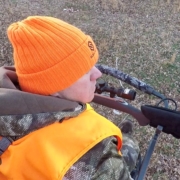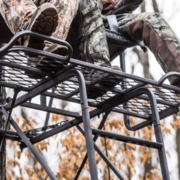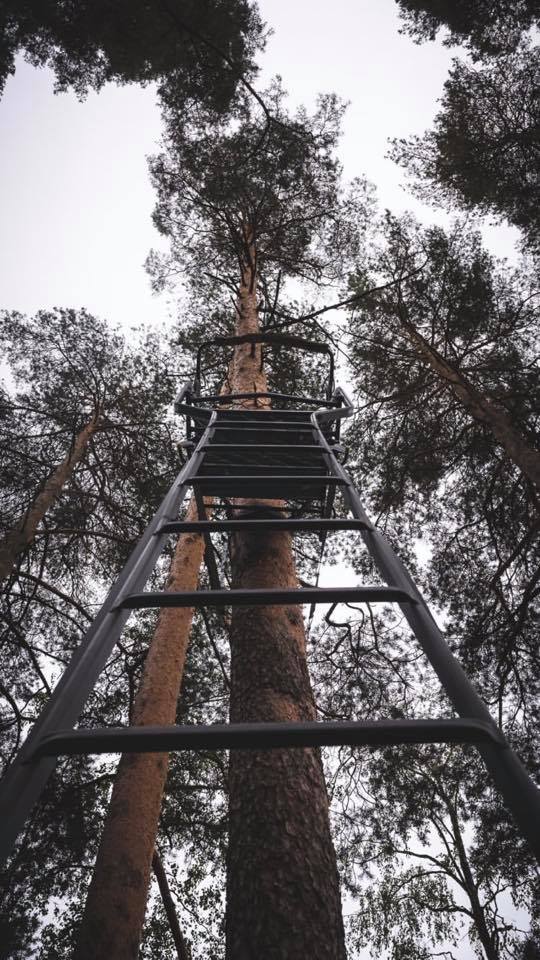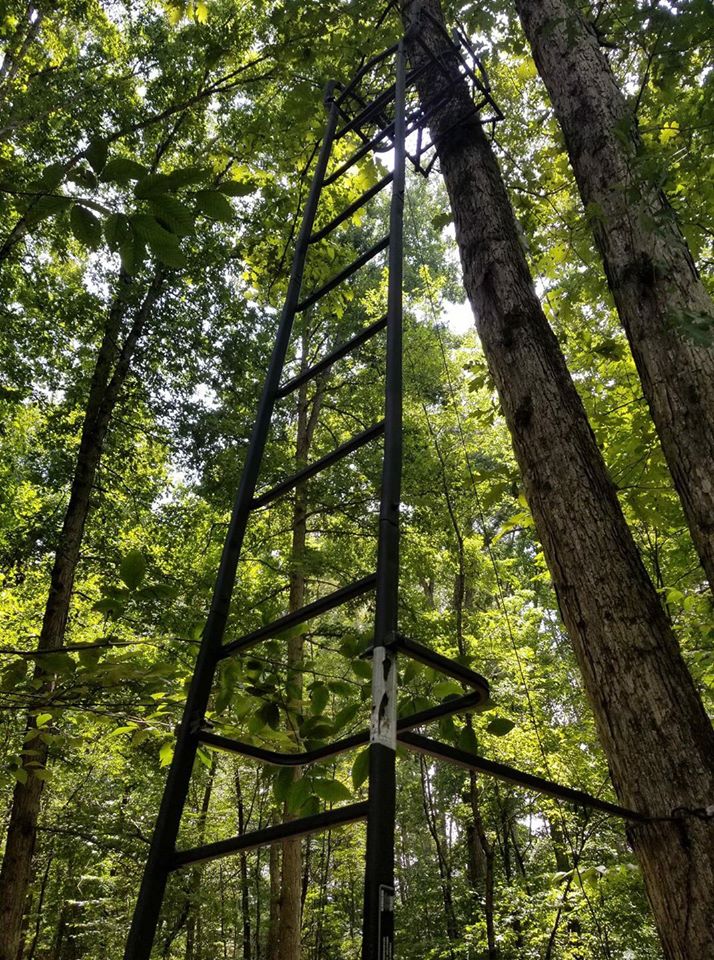Stand Placement During The Summer, For Fall Hunting Season Success
By: Heath Wood
The excitement of being in the treestand for the first time of the season is a feeling like no other. The anticipation built up throughout the summer months from scouting, checking game cameras, shooting a bow, and hanging stands are enough for any hunter to get a bit jittery come opening day.
As exciting as a new season beginning can be, nothing can dampen the enjoyment faster than realizing, after spending time throughout the summer scouting and hanging stands, that the stand placement is wrong on the first hunt.
Finding oneself in the wrong location begins with what the hunter has done during summer scouting. To confirm that stand locations will be in the right place at the right time, a hunter should have at least three different stand scenarios set and ready before the season begins.
Early Season Stand
One must keep in mind that scenarios change from summer to fall. One of the biggest mistakes I have made over the years has come from patterning deer based on their feeding pattern. During July and August, deer may spend most of their time feeding on green grasses and the abundance of browse found everywhere during the summer.
There are three things to look for when setting an early-season stand location to narrow down a suitable stand location. These three things are high on the priority list in mid-September; food, water, and bedding. Remember that it is still typically warm temperatures during the early season, deer need food and water to survive, and then they lay down to stay cool. To narrow down the right stand location, one needs to find where the least travel is required to get from one priority to another. Again, late summer feeding patterns usually revolve around green grasses; the edge of a timberline that connects with a field, food plot, or crops is an area in which deer can feed then get back in the shade quickly to stay cool. If one can find an area such as this with a pond, creek, or another type of water source nearby, it parallels the perfect early season stand location.
October Stand
During the summer months, deer are in the early season feeding pattern. In September, these areas may seem ideal for encountering deer movement. However, when mid-September and October roll around, the feeding patterns begin to change. For example, in the Midwest, where I hunt most of the time, it is common to see deer change their travel routes about mid-October when acorns begin falling. When travel routes change, the stand at the edge of a food plot or near a field suddenly becomes less likely to encounter deer. How does one find where deer are located most of the time in September, October, and November when hanging stands in July and August?
The first time I saw a good friend of mine walking through the woods in August with a pair of binoculars, looking up in the trees, I thought he had lost his mind. After quizzing him about what he was looking for, I realized he was very knowledgeable about predicting where the best stand locations would be when the season came around. He explained that he searched the umbrellas of the white oak trees to see which had the most acorns developing. In finding these areas a couple of months before acorns were ready to fall to the forest floor and hanging stands nearby these spots months prior, he could be in the prime when the season is in full swing.
The Rut Stand
The most challenging stand location to predict when hanging treestands during the summer is a stand that will be right for when bucks could be anywhere due to having breeding does and nothing else on their mind.
During the rut, a buck doesn’t have a travel route; it is wherever his nose leads him at any given time, which is why it is hard to narrow down one specific stand location. Since it’s impossible to narrow a location down, it is good to have a stand where there is a lot of visible ground. Areas where the hunter knows deer will be feeding, such as food plots, open areas in the timber, or down a power line, are all excellent areas to see farther distances.
When I find a well-open area, I like to use my Hawk Big Horn ladder stand or my Down & Out Warrior Blind on a raised platform. Using either of these stands allows for a comfortable hunt for a more extended period while watching a larger area. By seeing longer distances, one will have more opportunities to catch buck movement because of the amount of traveling a buck does during the rut. When hanging stands during the summer, the hard part is to make sure to have the imagination of what the area will look like when fall arrives. When hanging stands in the summer, the leaves are still in full bloom; grasses, weeds, brush, etc., are all in full foliage as well. When leaves begin falling during November, an area can change in looks quickly if one will remember what an area looked like the season before or visualize an area without the foliage.
To sum it up, the main reason for hanging stands before the season is to have them ready and in place without disturbing deer. By having multiple stands in different time of the year scenarios, the hunter will be in the right place at the right time without detouring the natural movement of deer. When the big buck arrives, you will be ready and waiting.




